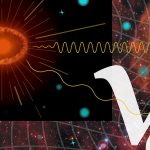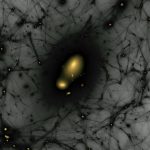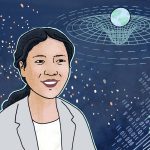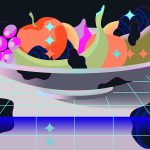From Gizmodo, May 5, 2020: Fermilab scientist Brian Nord weighs in on the question of how automated devices, such as an autonomously operating telescope, free from human biases and complications, could find the solutions to questions about dark matter and dark energy.
astrophysics
From Five Books, March 30, 2020: Fermilab scientist Dan Hooper gives his recommendations for books on the Big Bang and talks about whether our entire understanding of the universe is about to be turned upside down.
From Physics World, March 24, 2020: Scientists using the first year of data from the Dark Energy Survey, which is led by Fermilab, establish that there is a correlation between the positions of gravitational lenses — deduced from the stretching of distant galaxies — and gamma-ray photons. A data comparison from gravitational lensing and gamma-ray observations reveals that regions of the sky with greater concentrations of matter emit more gamma rays.
From Forbes, March 16, 2020: Researchers using data from the Fermilab-led Dark Energy Survey have identified more than 300 trans-Neptunian objects — minor planets located in the far reaches of the solar system — including well over 100 new discoveries. The research pioneers a new technique that could help astronomers in the search for undiscovered planets — including the mysterious “Planet 9.”
From Event Horizon podcast, March 19, 2020: Fermilab scientist James Annis and John Michael Godier discuss neutrinos, dark energy, dark matter and upcoming cosmological surveys in this 30-minute interview.
From The Guardian’s Science Weekly podcast, Feb. 14, 2020: What happened at the dawn of the universe, just trillionths of a second after the start of the big bang, remains a mystery. Revisiting these moments in his new book, “At the Edge of Time,” Fermilab scientist Dan Hooper explores many of the unknowns in cosmology. Hooper guides Ian Sample through the birth of our universe to its enigmatic constituents of dark matter and dark energy in this 22-minute podcast episode.
There are a lot of things scientists don’t know about dark matter: Can we catch it in a detector? Can we make it in a lab? What kinds of particles is it made of? Is it made of more than one kind of particle? Is it even made of particles at all? Still, although scientists have yet to find the spooky stuff, they aren’t completely in the dark.




